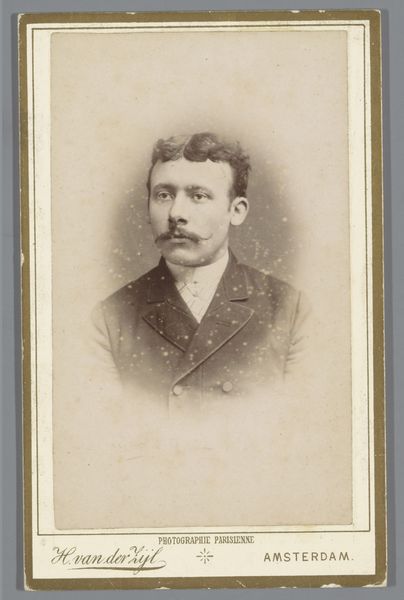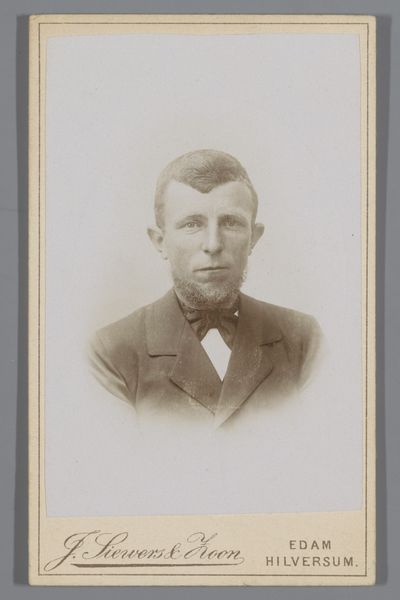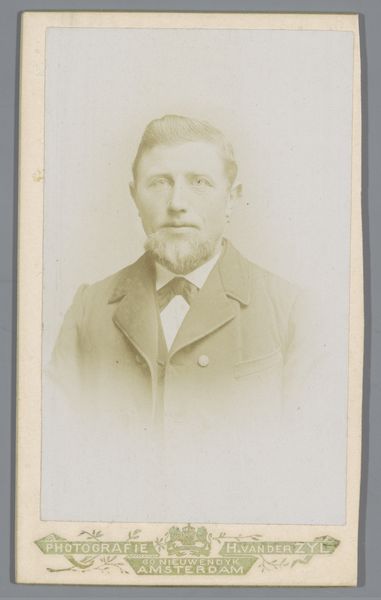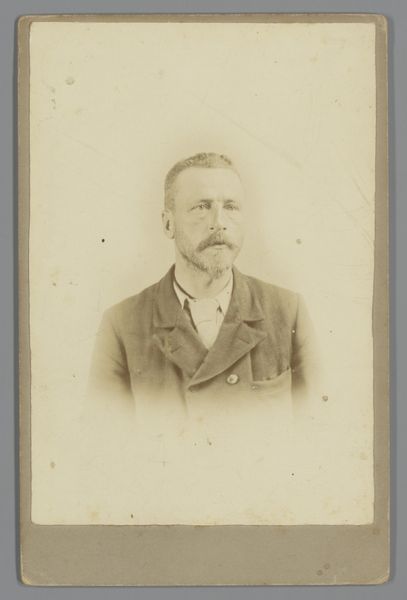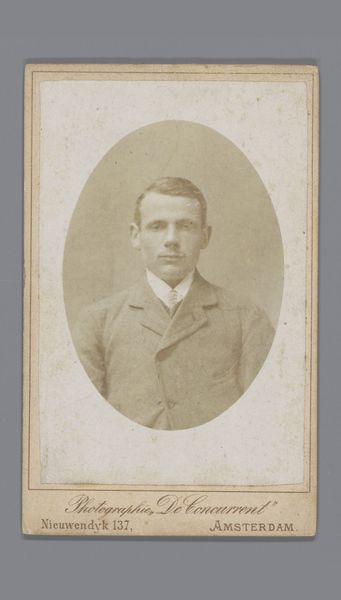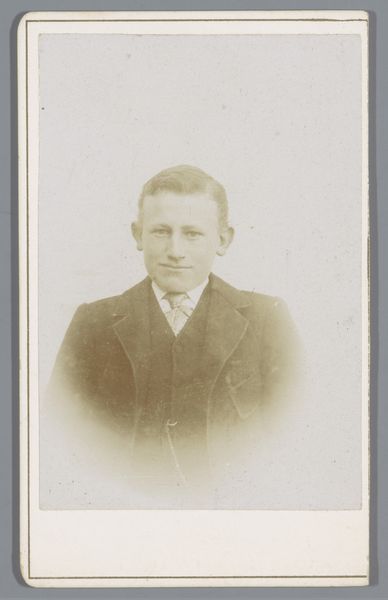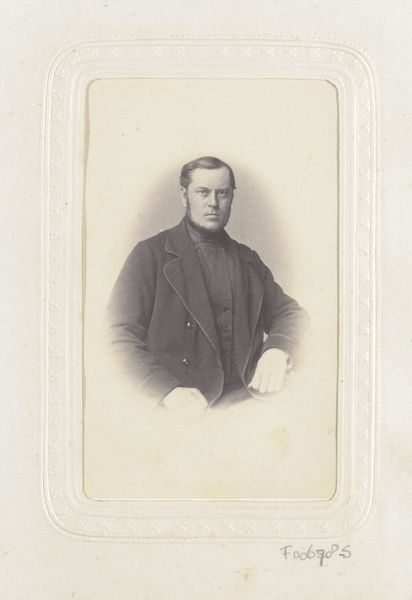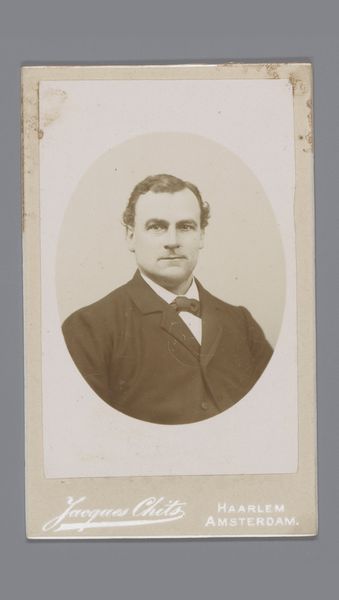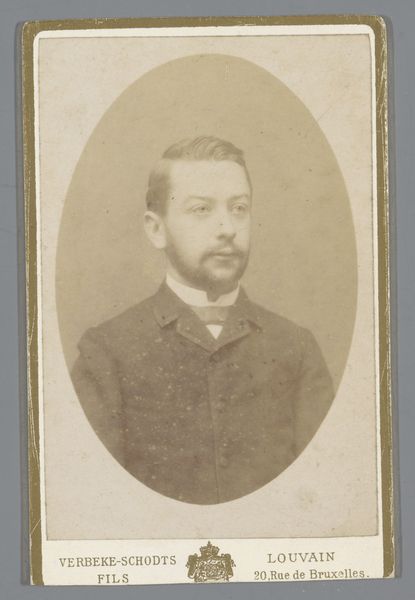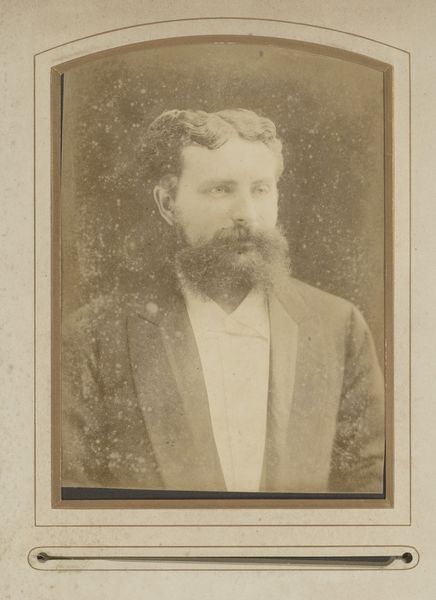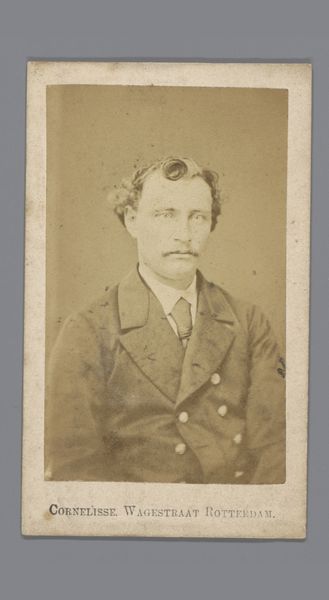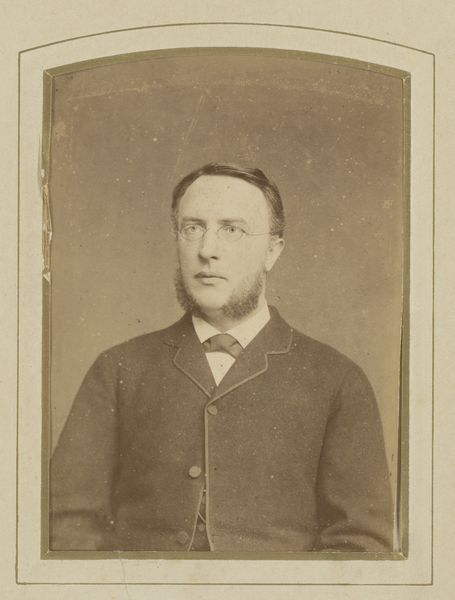
photography, gelatin-silver-print
#
portrait
#
aged paper
#
photography
#
framed image
#
gelatin-silver-print
#
realism
Dimensions: height 104 mm, width 63 mm
Copyright: Rijks Museum: Open Domain
Editor: This gelatin silver print, “Portret van Andries Visser,” made sometime between 1890 and 1910 by D. Fraenkel & Zoon, presents us with a stern-faced man in a suit. The sepia tone lends a gravity to the image, and there’s something very direct about his gaze. What historical context might illuminate this piece further? Curator: That directness is interesting to note. Portraits like these gained popularity alongside the rise of photography as a tool for self-representation amongst a broader public. Consider how this challenges the traditional power dynamics of painted portraits, historically reserved for the elite. What statements were ordinary people trying to make through these newly accessible forms of representation? Editor: So, it’s less about artistic patronage and more about… societal agency? The sitter is in a suit and tie, suggesting middle class. Was photography empowering for emerging social classes at the time? Curator: Exactly. The accessibility of photography offered a form of visual validation. Owning a portrait shifted from being a symbol of aristocratic status to one of bourgeois respectability. The subject controls how they are presented. And further, the widespread distribution of photographic images changed the visual landscape of society. How do you think this relatively straightforward composition might contribute to that sense of bourgeois respectability? Editor: The framing, the oval shape, and the subject's formal attire communicate order and status. Perhaps its simplicity contributes to its message of accessibility and aspirational normalcy. I hadn't considered the democratizing impact of early photography like that! Curator: Indeed. By looking at the portrait through the lens of social history, we move beyond mere aesthetic appreciation and towards understanding its role in shaping public perception and social identity. Editor: I’ll never see an old photo the same way again. Thank you for shedding light on its cultural implications.
Comments
No comments
Be the first to comment and join the conversation on the ultimate creative platform.
